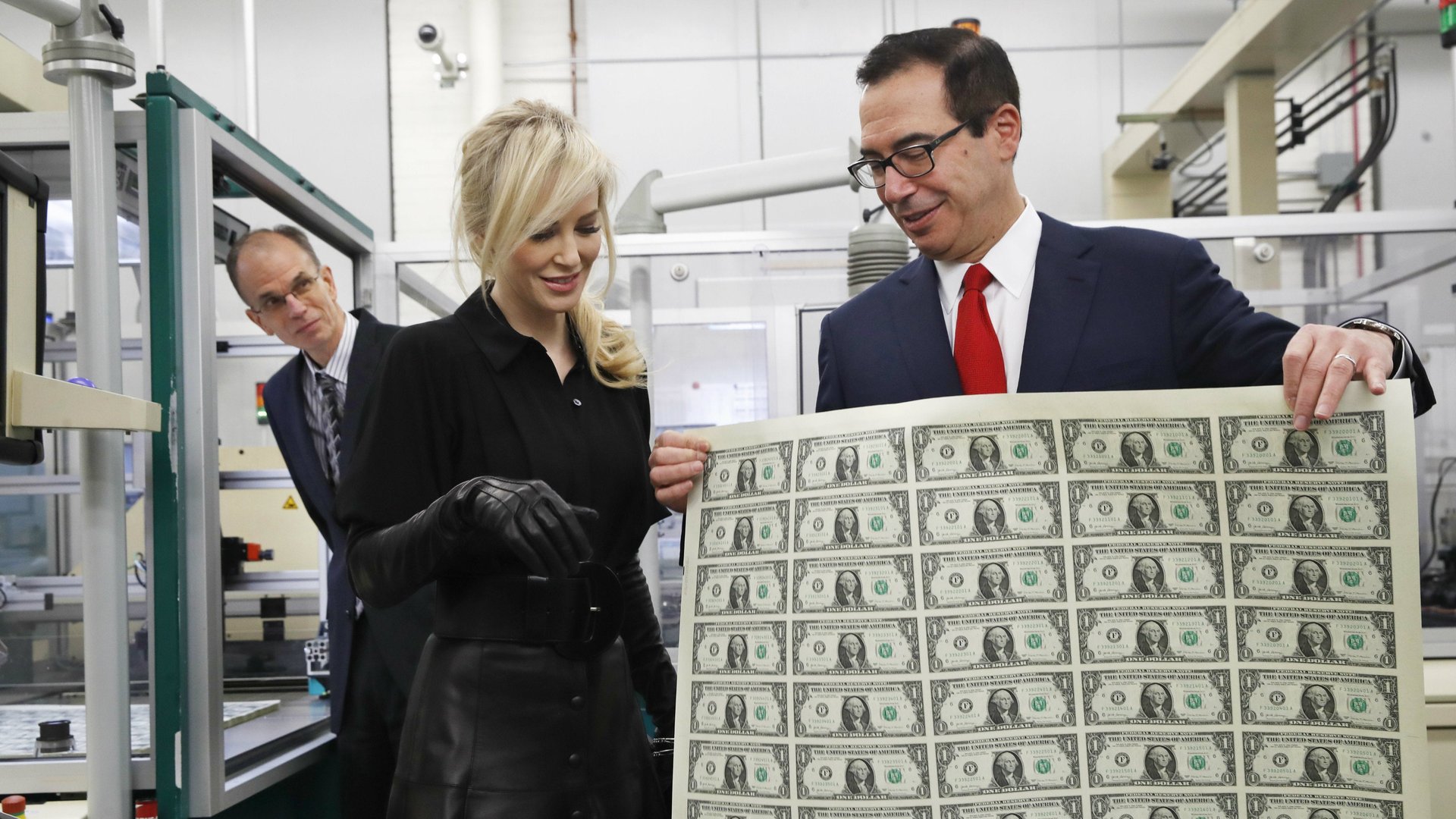The US dollar just had its worst year in more than a decade, and 2018 will bring more of the same
Early in 2017, Donald Trump was worried the dollar was getting too strong. At the start of 2018, he has nothing to worry about. This year, the US dollar recorded an annual decline for the first time in five years.


Early in 2017, Donald Trump was worried the dollar was getting too strong. At the start of 2018, he has nothing to worry about. This year, the US dollar recorded an annual decline for the first time in five years.
The ICE dollar index, which measures the dollar against a basket of six other currencies, fell nearly 10% in 2017. That’s biggest annual decline since 2003 when the US dollar fell almost 15%.
Three interest-rate hikes by the Federal Reserve and the eventual passing of tax reform weren’t enough to continue the dollar’s years-long rally. Low inflation weighed on perceptions of how high the central bank would raise rates, and strong economic performances by countries around the world made the dollar comparatively less attractive.
A big part of the dollar’s decline in 2017 was due to the euro’s strength. The eurozone had its best economic year in a decade and traders piled on bets that the currency would continue to climb. The US dollar weakened by more than 12% against the euro in the year. US stock markets meanwhile broke record after record this year, climbing to new heights amid positive company earnings and relatively strong economic growth.
While the dollar hasn’t reacted much to the passing of tax reform, a major plank of Trump’s political agenda, some argue that the repatriation (paywall) of overseas earnings could see hundreds of billions of dollars flow in from US companies keeping foreign profits abroad. Theoretically, this should boost the value of the dollar.
Even if companies have as much as $2.6 trillion stashed abroad, the majority of this money seems to already be in dollar-denominated assets. Meanwhile, the set-up of the repatriation tax cut is a longer time window, potentially making it less enticing to companies that the 12-month cut in 2005 that helped boost the dollar. That makes it unlikely that this tax cut will have a meaningful impact on the dollar.
Most analysts predict a similarly tough year for the greenback in 2018. Goldman Sachs expects a “soggy dollar,” meaning a dollar that has “all but finished pricing the relative strength of the US vs. the global economy.” UBS and Lombard Odier expect the euro to keep gaining against the dollar, while strategists at French Bank Société Générale see the dollar falling another 10%, first against the euro then against the yen.
Others, including BlackRock Investment Institute, forecast a short-term respite for the dollar with it gaining at the start of the year as the Fed continues to hike interest rates, in turn pushing up yields on US Treasuries. Analysts at ING say the dollar’s best chance of a rally is in the first quarter of 2018, but under most longer-term scenarios they expect the currency to weaken. Later into the year, central bank tightening elsewhere will diminish the advantage of higher yields on US assets.
Analysts at JPMorgan had also thought the dollar would strengthen early in 2018, but they changed their minds after minimal gains in the currency in response to the tax bill. Concerns about disinflationary forces in the US economy and lower-than-expected rate increases from the Fed add to the outlook for a weaker US dollar in 2018.
Here’s a lookback at how the dollar performed against the 19 other most-traded currencies in 2017.